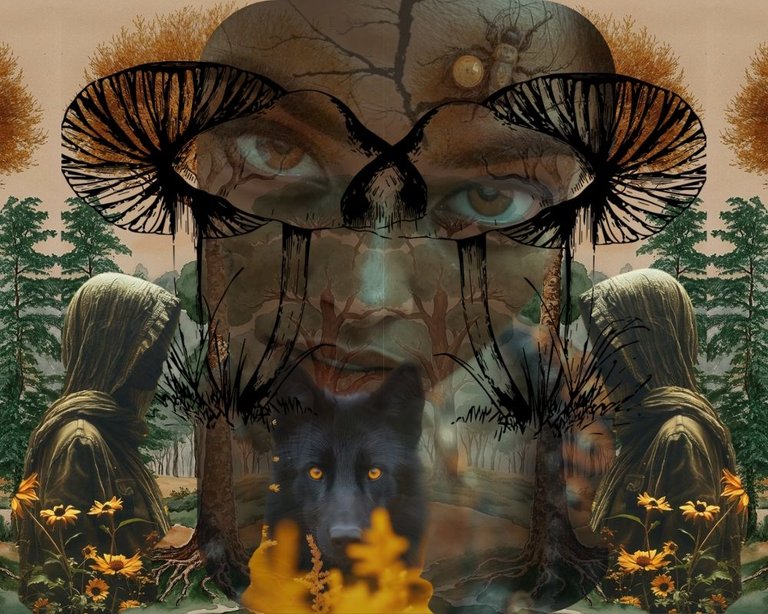
As reiterated, humans have an extremely complex relationship with nature. This relationship has been fostered to embrace a variety of feelings ranging from positive, to ambient, to negative based on individual interaction or negative portrayals of perceived dangers.
From my perspective, at the age of ten, I began to hold a morbid fear of forests. I believed from hearsay and reading books that they were magical, haunted with all types of creatures, strange animals waiting to devour me, ghosts, people who lived a different way of life than I, deadly trees and plants, and witches and wizards aiming to cast spells if they catch me.
All these horrors waiting for me in the forests were exacerbated by my older brother who never missed a chance to play tricks on my already frayed nerves. It was he who warned me of vampires and werewolves running amuck at night searching for children my age. But they dwelt in the forest, he stressed, and only came out at night. So if I wanted to remain alive, it was best I not venture out at night.
Only after I became older and confronted him did I realize he stressed not going out at night for my safety from regular humans who meant me harm. He smirked, which made me angry.
But the damage had been done. Fear of night and forests was embedded in my psyche.
Stemming from numerous forklore, myths, mythologies, and legends, forests have been the victim of misconception since ancient times. These myths and legends gave way to hysteria that led to an entire genre of books and movies dedicated to demonizing forest spaces.
Forest settings at night provide the perfect eerie atmosphere for danger by forest creatures who treat humans in a benevolent or malicious manner according to how that particular individual treats the forest.
For example, in Slavic forklore, a creature named Leshy appears as a masculine humanoid. This creature possessed the ability of transformation in various sizes to disguise himself as other humans. Misdirecting lost wanderers, he also engaged in abducting children who were mistreated by their family, especially, and take them to the ethereal realm of forest-dwelling folk. Often perceived as the "Devil", this creature was perceived as a malevolent entity. However, Leshy's attitude towards humans varied, depending on their behavior in how they interacted with the forest. In this way, Leshy is also often considered to be temperamental, with a similar disposition to that of a fairy. 1
For centuries, folktales of wonder and magic have endured due to the popularity of the fantasy genre in books and movies. Forest were portrayed as a magical place where fairies and other magical beings dwelt who could cast spells on humans for numerous reasons. 2
The German versions of forests depicted in fantasy and fairytale books derived inspiration from the Brothers Grimm. Described as dense and foreboding, forests were believed to have been the inspiration for their enhanced versions of old German folktales, including the classic stories of “Hansel and Gretel”, “Snow White”, “Sleeping Beauty”, and “The Frog Prince”.
In developing their forest mysteries, rarely did sunlight penetrate the dense fir trees of the Black Forest, and the myths surrounding those woods were more of fantasy than paranormal. Instances of this include, a headless horseman riding on a great white steed; a king who kidnaps women to take them to his underwater lair where he lives among the nymphs; friendly dwarfs; and lurking werewolves ready to pounce and transform one into their likeness. 3
Regardless of one's perspective, the dangers of forests in a nighttime setting or wonders in daylight will continue as long as the mysteries are kept alive in the minds of children and adults.

For my current mixed media collage project in my series Grappling With Nature, I address forests in this series because I wanted to examine humans' relationship with this particular aspect of nature and how they view the misconceptions as negative. Since these misconceptions originated from legends and forklore, I envisioned an unsettling forest setting with legendary creatures and unrecognizable people skulking about.
Below are my steps which I uploaded the different type images into Canva. For the female with the unusual insect on her face that resulted in an infection from a bite, I utilized StarryAI, the stable diffusion program. Other images I included were free-sourced. The procedures in pictures I used to blend the various elements began with a blank, white canvas. I then added layers of elements.
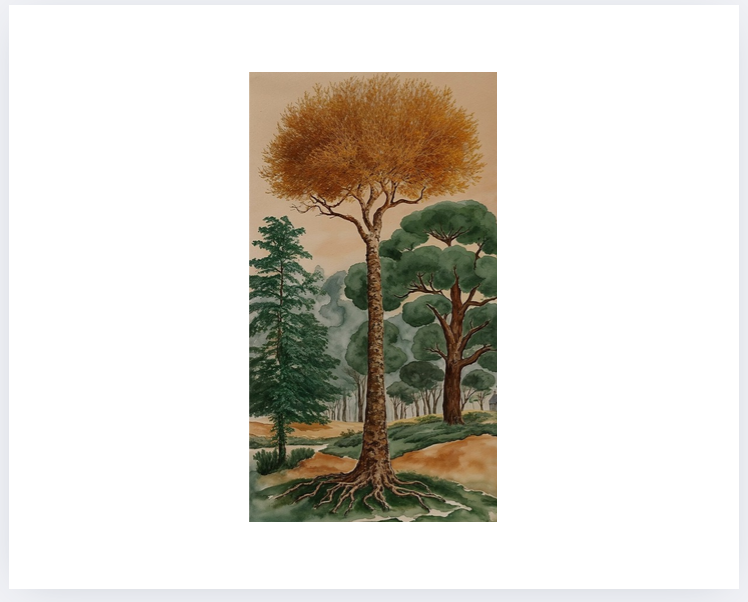 | 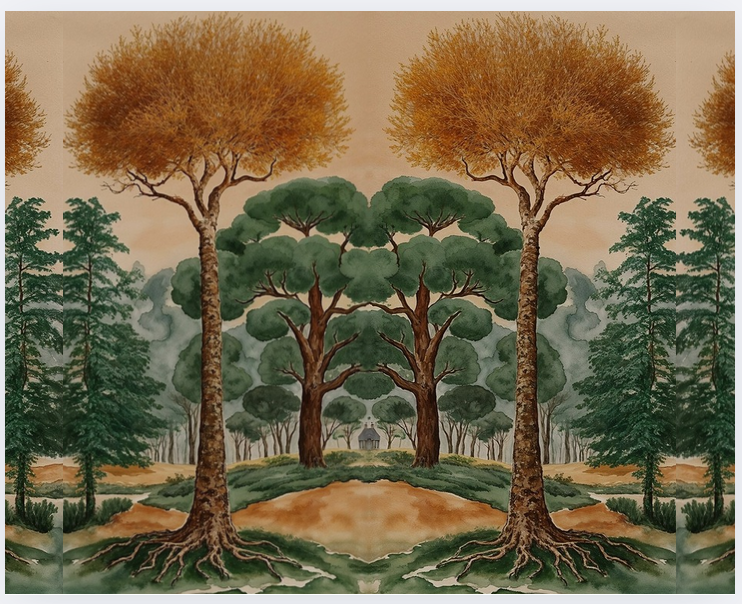 | 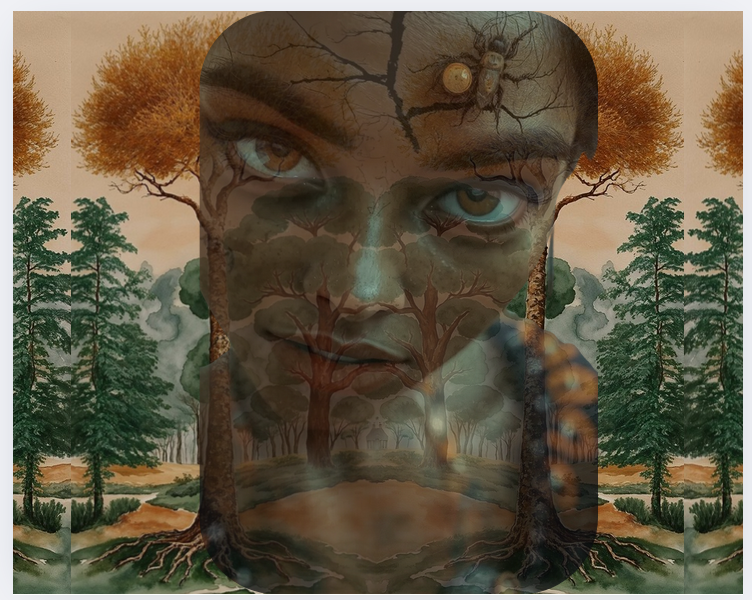 | 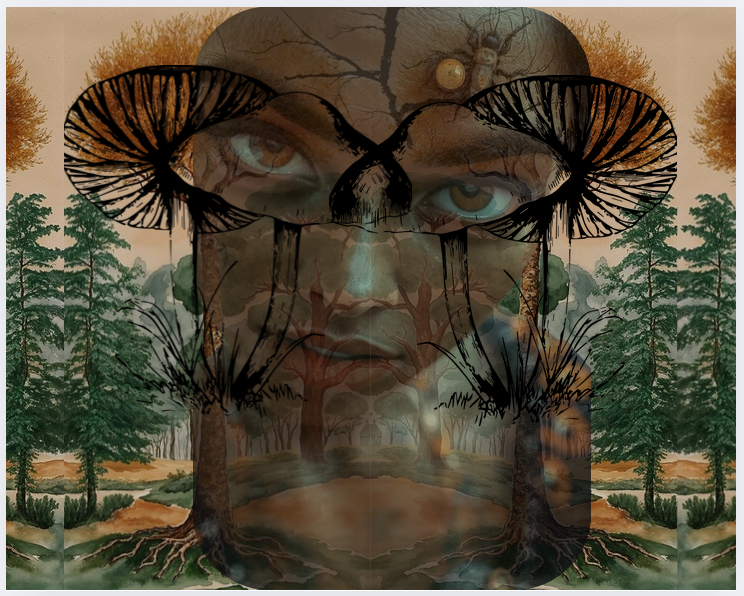 | 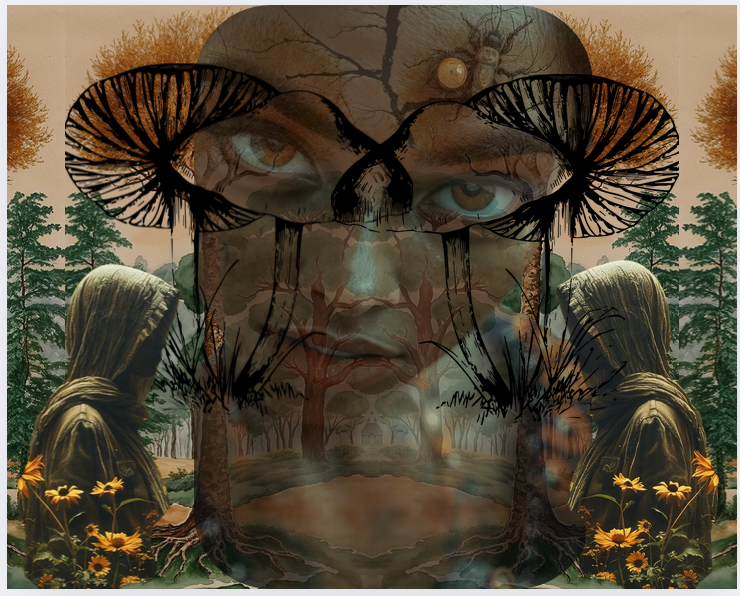 |  |

| StarryAI | Free | Free | Free | Free |
|---|---|---|---|---|
| Text Input: "Close up of beautiful female of color with glowing skin and lush red lipstick with a cracked head. Inset in the crack and continuing down to the shoulders is a beetle on her cheek with branches flowing from its head, red eyes, and a devilish smile." Style: Twisted Whimsy | Forest | Wolf | Cloaked figure | Mushroom |
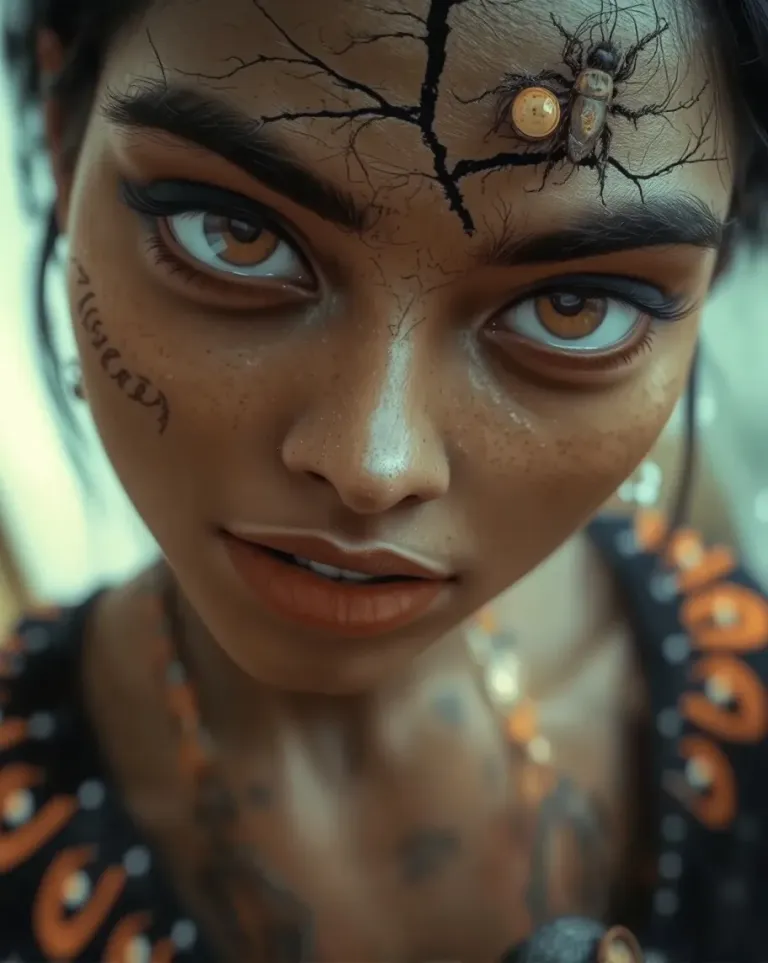 | 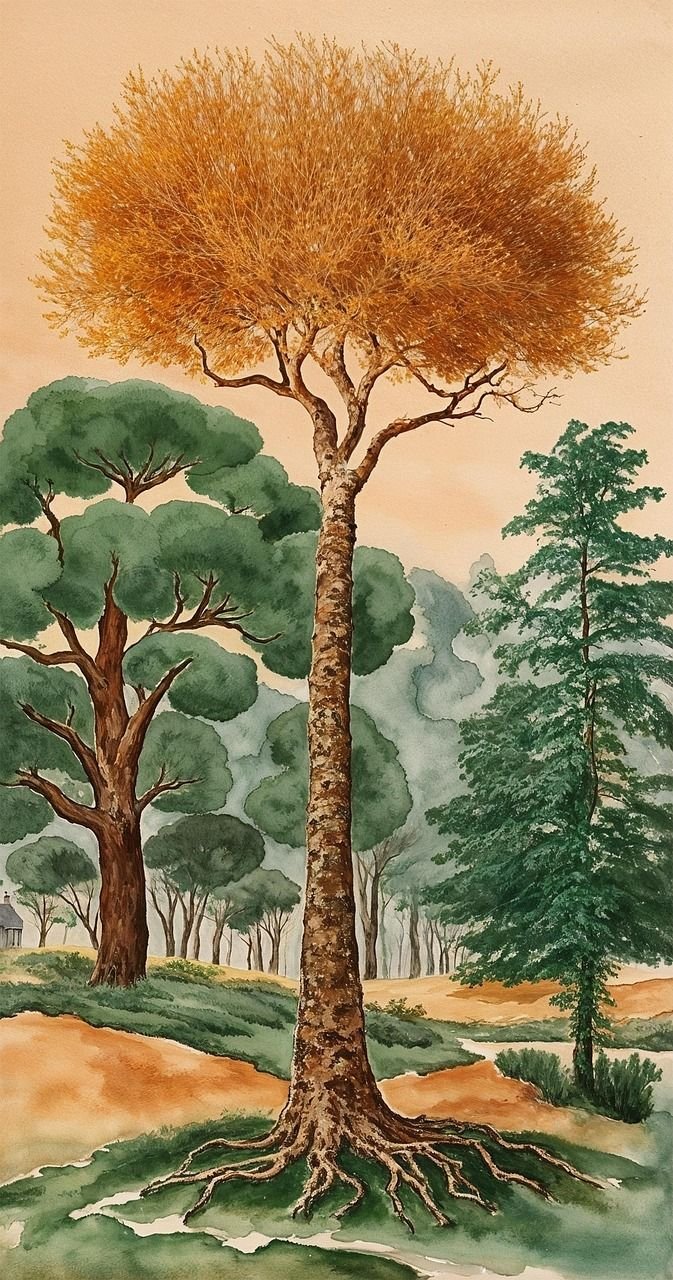 | 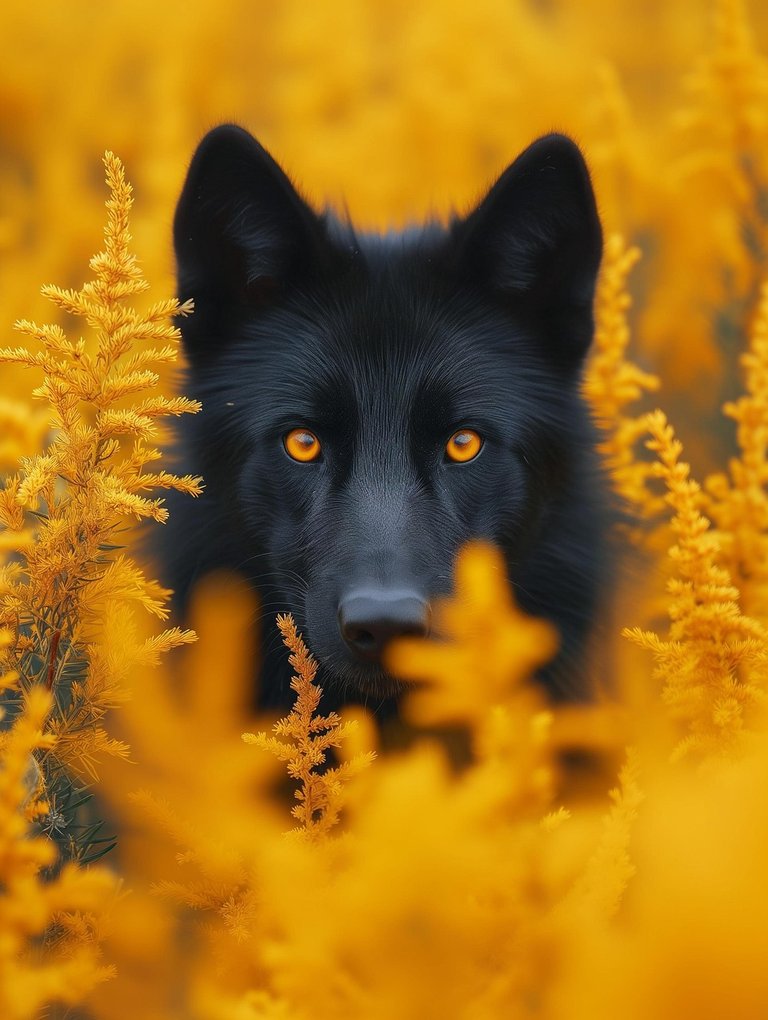 | 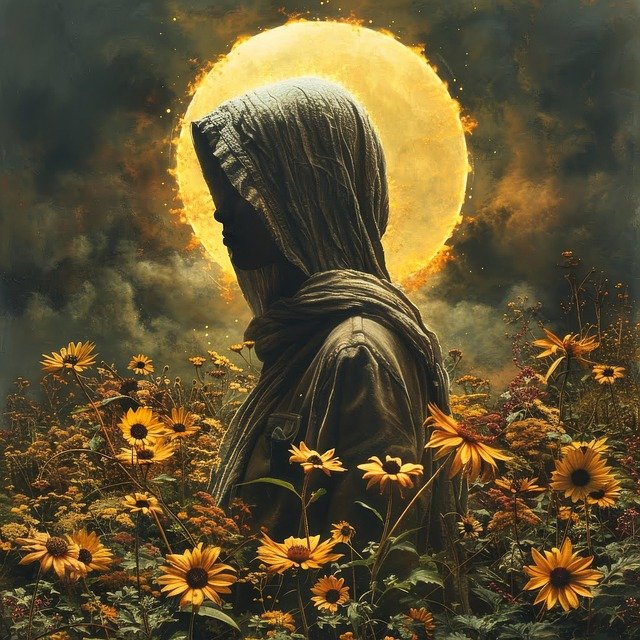 |  |

I share with you my completed design:


Thanks for taking the time to view my post. I hope you like my mixed media project.





SOURCES:
a) JustClickindiva's Footer created in Canva utilizing its free background and images used with permission from discord admins.
b) Unless otherwise noted, all photos taken by me with my (i) Samsung Galaxy 10" Tablet, (ii) Samsung Phone, & (iii) FUJI FinePix S3380 - 14 Mega Pixels Digital Camera
c) Purple Butterfly part of purchased set of Spiritual Clip Art for my Personal Use
d) All Community logos, banners, page dividers used with permission of Discord Channel admins.
e) Ladies of Hive banner used with permission of and in accordance with the admin's guidelines
f) Thumbnail Image created by me in Canva.
g) "Flames." What is Apophysis 2.09. https://flam3.com/

If translation included, I use DeepL to assist my readers.
Thanks for your patience an understanding.






